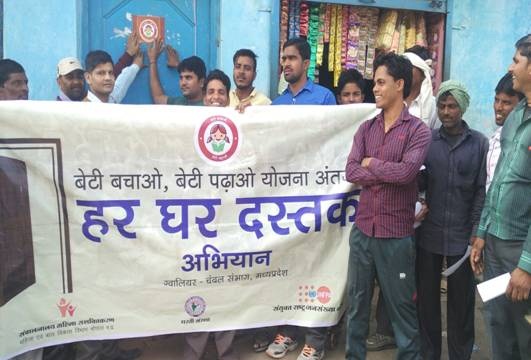In a recent screening drive called the 'Dastak Campaign', health department teams in Indore were shocked to discover over 71 children suffering from severe acute malnourishment (SAM). This ongoing campaign aims to screen children under the age of five for various diseases and provide timely treatment.
Not only did they find severely malnourished children, but the health officials also identified eight kids with medical complications and 27 children facing severe anemia. These findings have raised concerns about the effectiveness of efforts to eradicate malnutrition in the region.
Despite screening only 11 percent of the targeted children so far, the number of cases in the SAM category and severe anemia is quite alarming. Dr. Tarun Gupta, the district immunization officer, shared that they began the campaign on July 18, intending to screen over 3.85 lakh children in the city. However, in the last 10 days, they have only screened around 43,000 kids.
As part of the campaign, more than 400 teams, comprising anganwadi workers, ASHAs (Accredited Social Health Activists), paramedical staff, and others, are conducting door-to-door visits across the district. They aim to raise awareness among residents about childhood abnormalities, child malnutrition, and proper nutrition for newborns.
While seven severely malnourished kids have been admitted to a nutrition rehabilitation center for immediate care, the screening efforts will continue until August 31. The health department plans to submit a comprehensive report to the administration afterward.
Dastak Campaign: A Journey of Hope and Progress
The Dastak Campaign is a remarkable initiative that began with the aim of eradicating polio from India. It all started in 2009 when the government, along with various partners and organizations, came together to fight against this crippling disease. The campaign's name "Dastak" means "knock" in Hindi, symbolizing the efforts to knock out polio.
Back in the day, polio was a significant public health concern in India, affecting thousands of children every year. The disease could lead to paralysis and even death, leaving families devastated. But the Dastak Campaign brought a ray of hope, uniting millions of health workers, volunteers, and government officials under one mission: to immunize every child against polio.
The strategy was simple yet powerful - a nationwide vaccination drive. Teams of health workers went door-to-door, knocking on people's doors to ensure that every child received the polio vaccine. They braved challenging terrains, extreme weather, and even cultural barriers to reach every child, even in remote areas.
Over the years, the Dastak Campaign gained momentum and made significant progress. Thanks to the relentless efforts of the campaign and the dedication of those involved, India witnessed a remarkable achievement. On March 27, 2014, the World Health Organization (WHO) declared India as a polio-free country. This achievement was a moment of pride and celebration for the entire nation, as it demonstrated the power of collective action and the impact of a well-executed public health campaign.
But the fight against polio didn't end there. The success of the Dastak Campaign inspired the global polio eradication efforts, reinforcing the belief that polio can be eliminated worldwide. India's experience became a valuable lesson in overcoming challenges and barriers to immunization.
Today, the Dastak Campaign has transformed into an ongoing effort to maintain a polio-free status. It has expanded its scope to address other childhood diseases through routine immunization programs. The same dedicated health workers and volunteers continue to work tirelessly, ensuring that every child receives life-saving vaccines to protect them from preventable diseases.

 The situation sheds light on the pressing need to address child malnutrition effectively and urgently. It calls for continued efforts from the authorities, health professionals, and the community to ensure the well-being of children and create a healthier future for the younger generation.
The situation sheds light on the pressing need to address child malnutrition effectively and urgently. It calls for continued efforts from the authorities, health professionals, and the community to ensure the well-being of children and create a healthier future for the younger generation.










.jpeg)




.jpeg)

.jpg)













